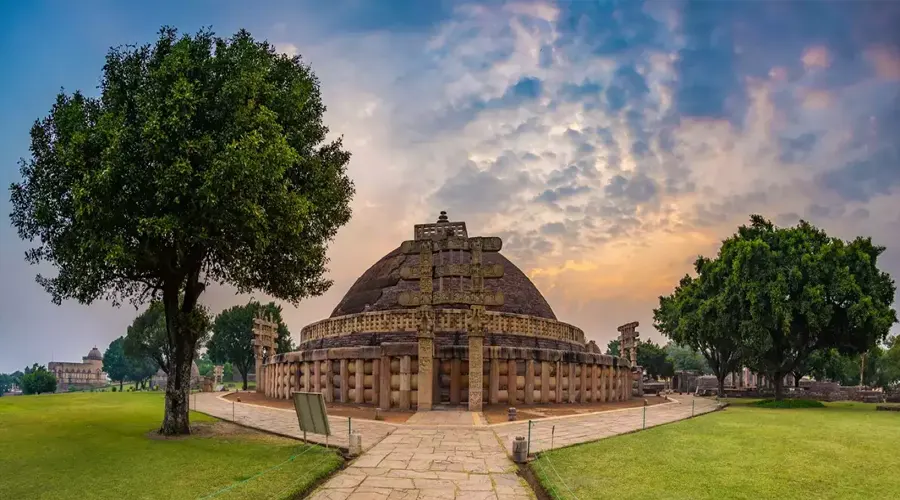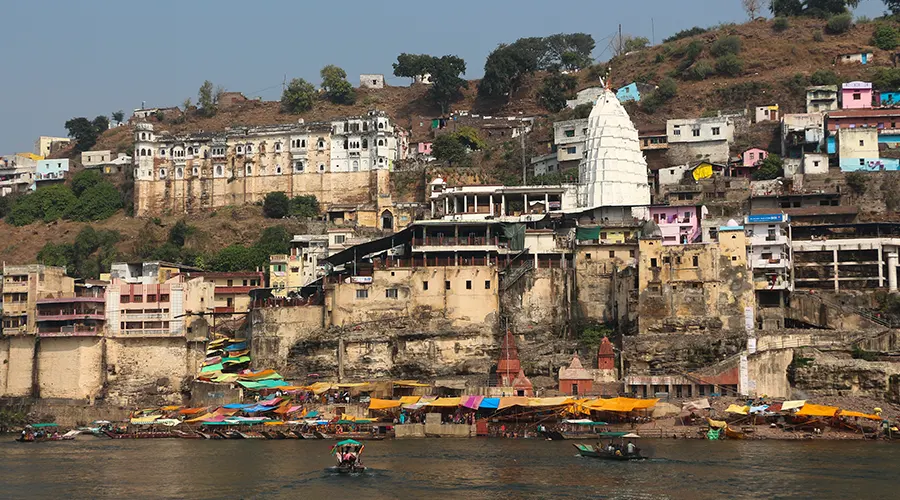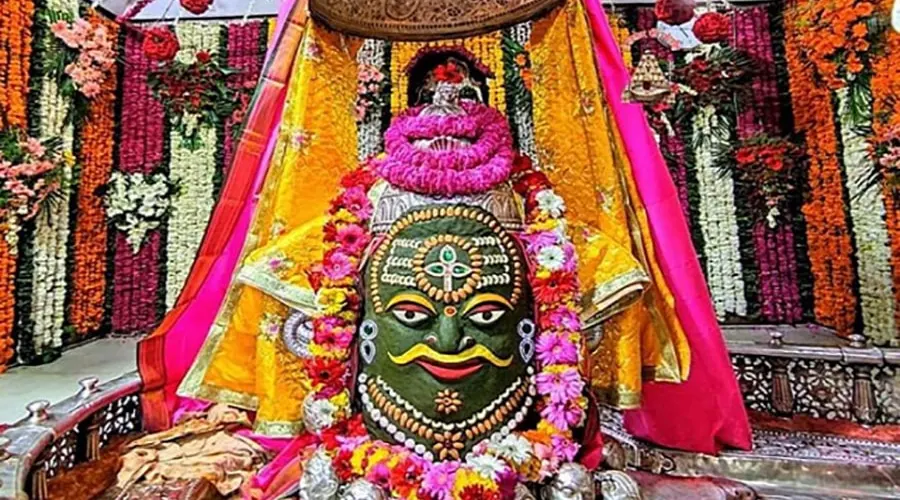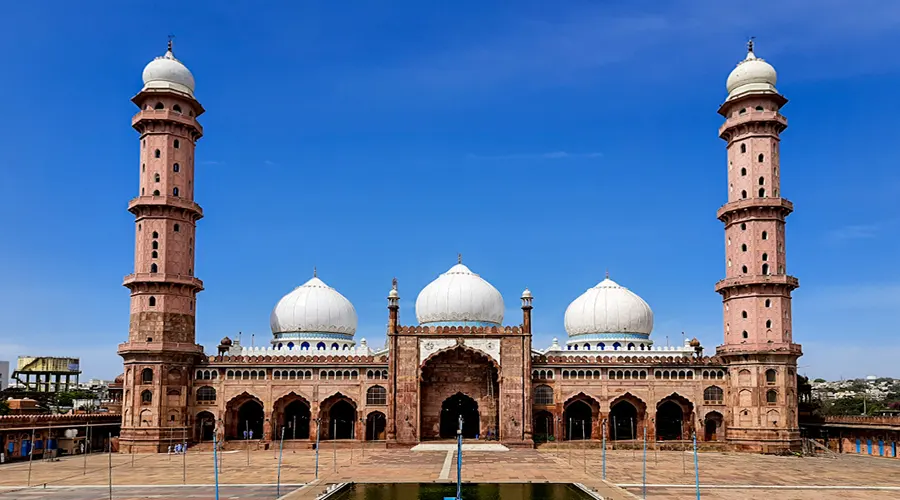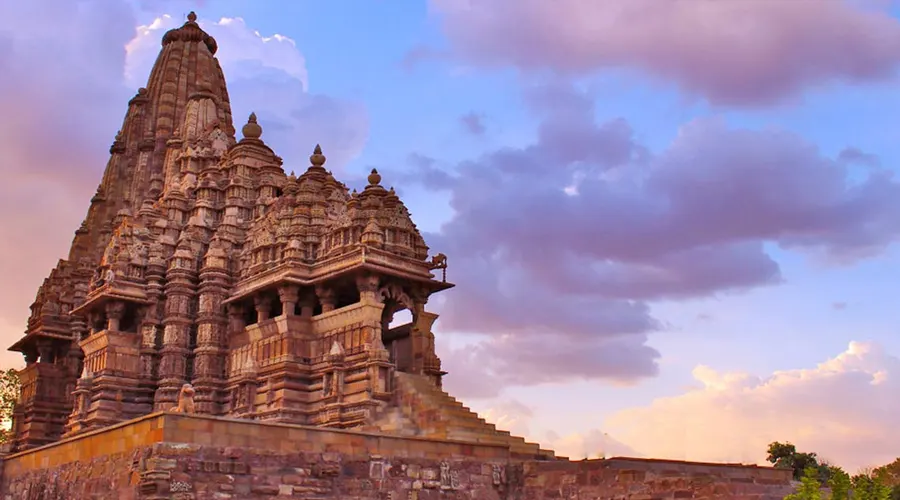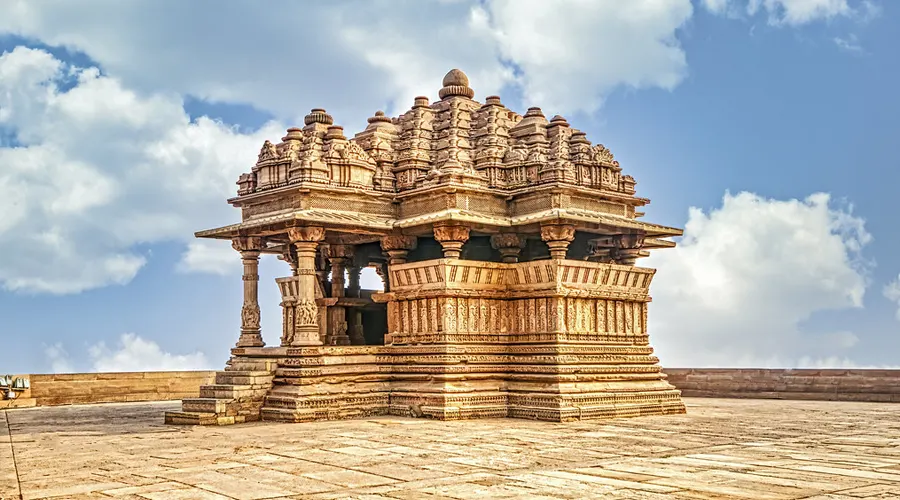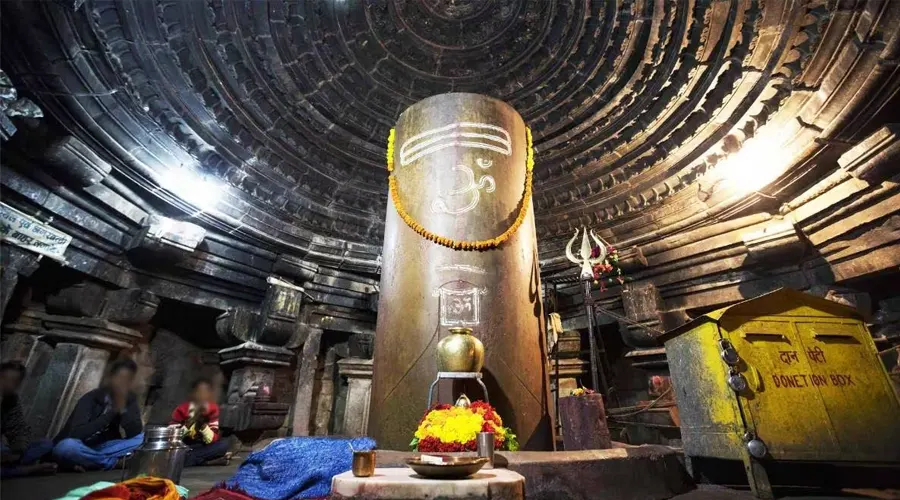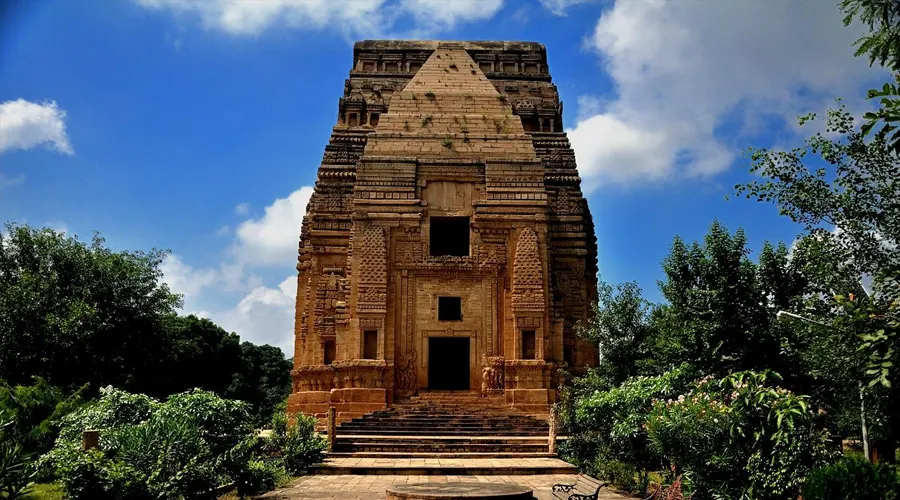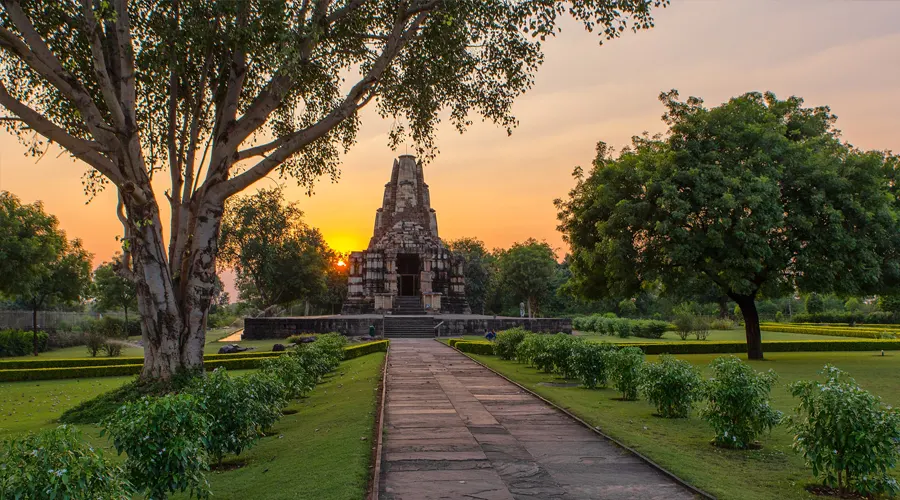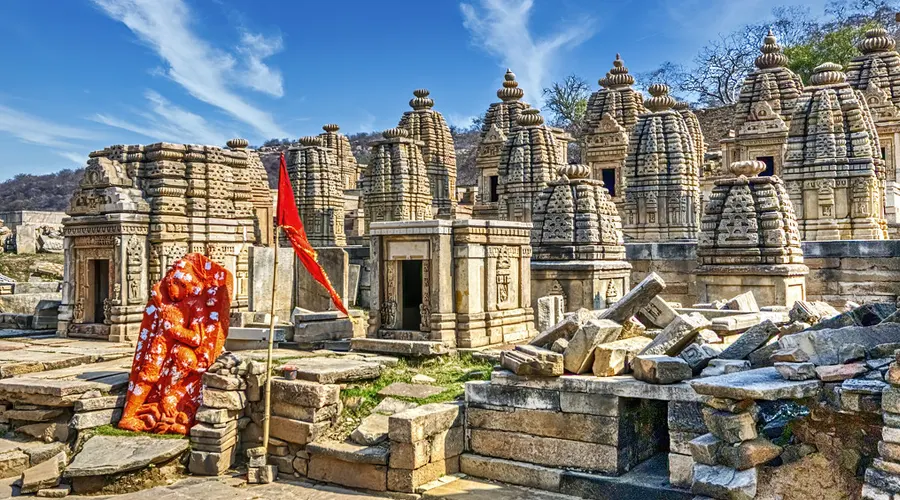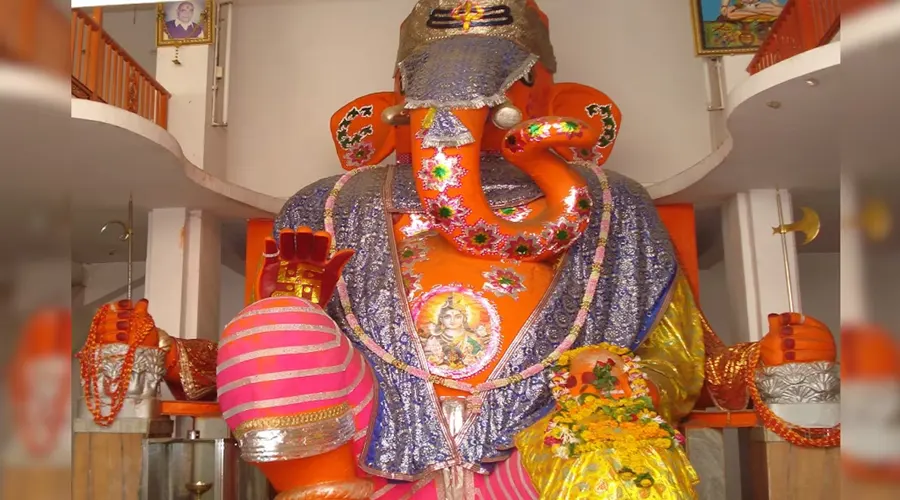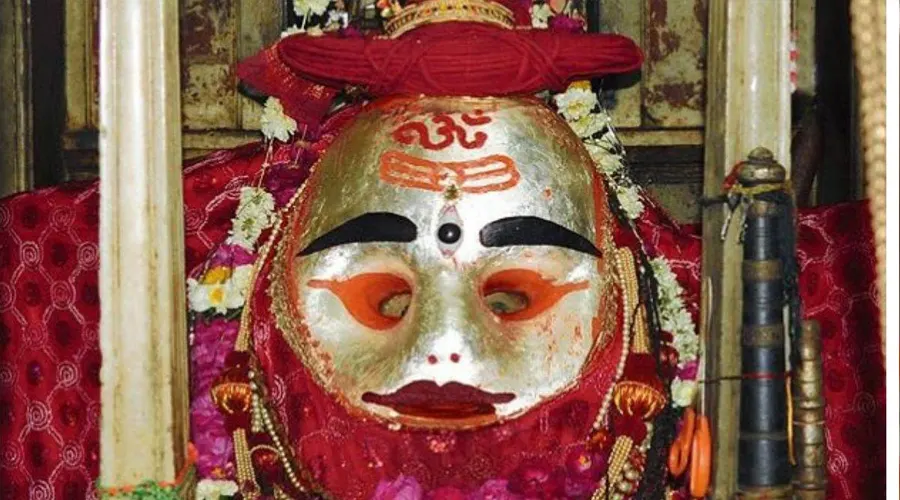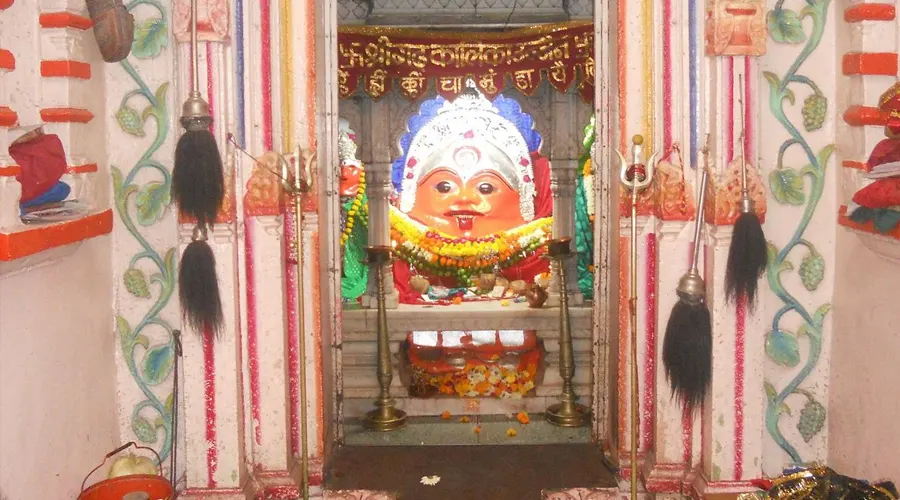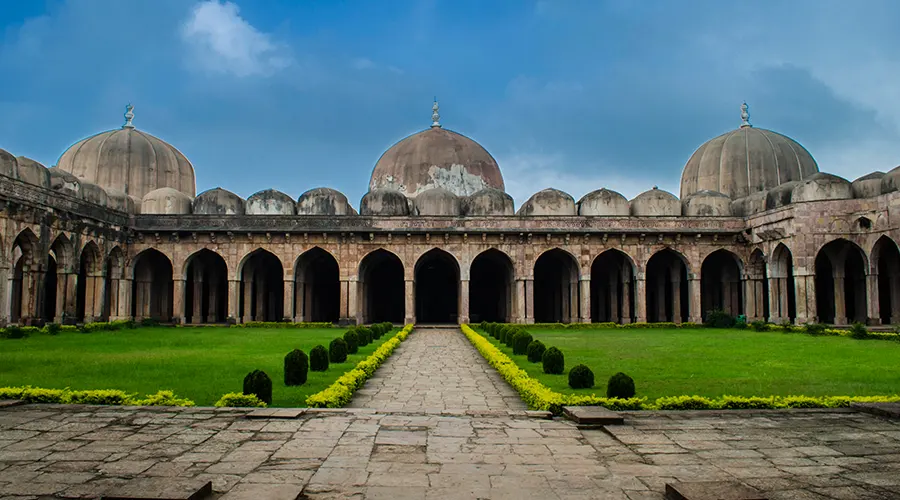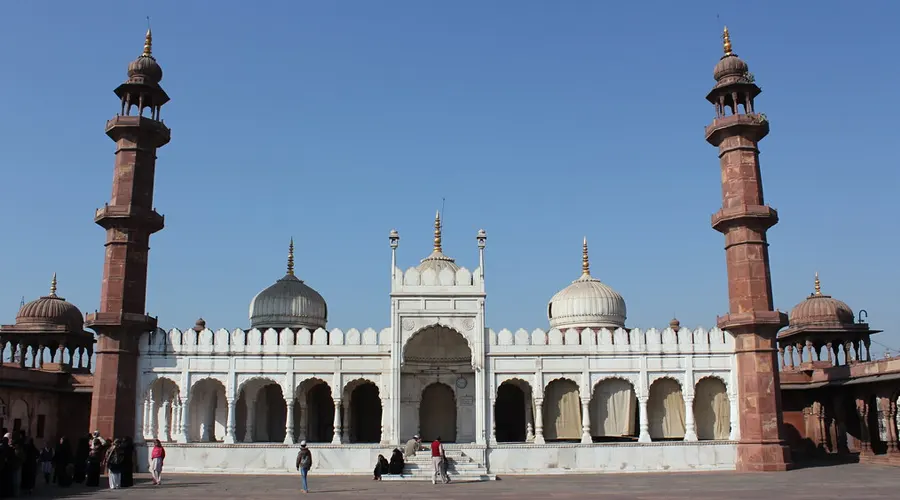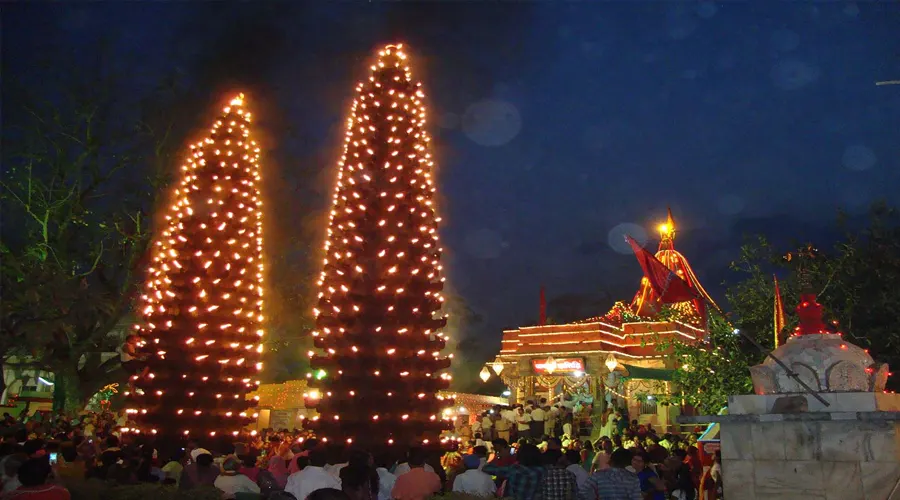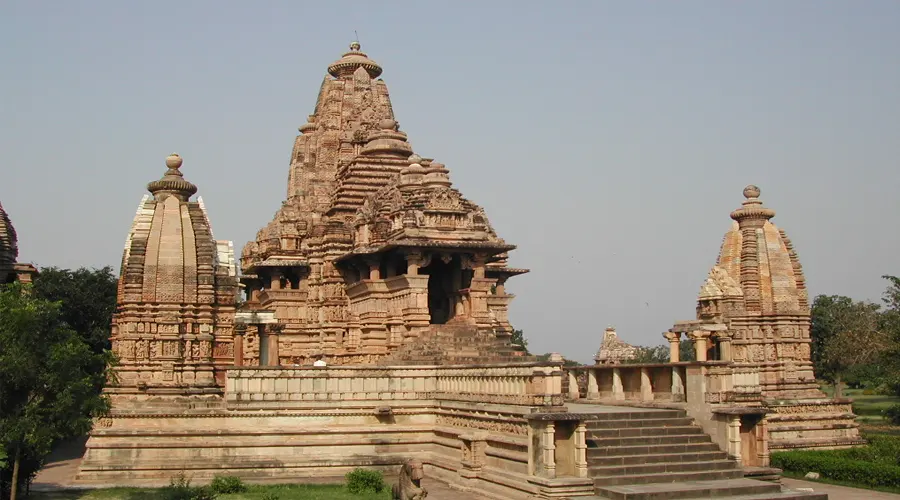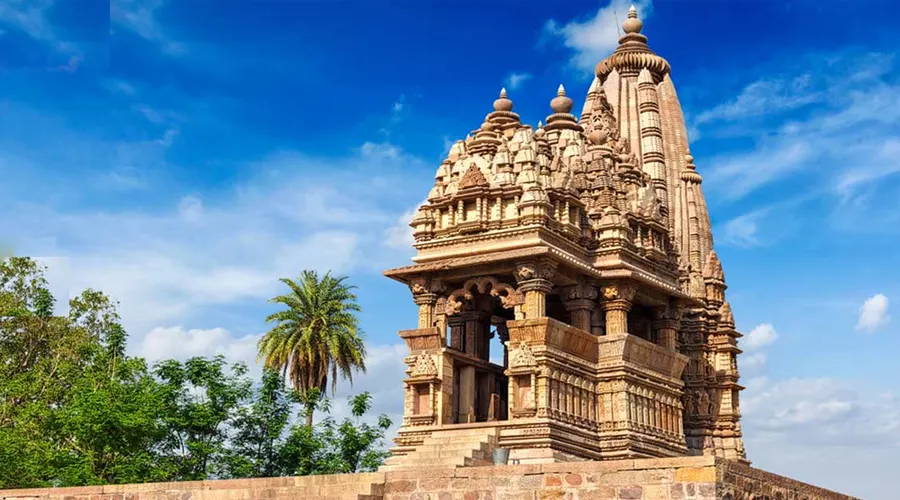Sanchi Stupa
The Great Stupa at Sanchi has been the focal point of the Buddhist faith in the region since it was built by Emperor Ashoka in the 3rd century BC. The grand structure still inspires awe today and sits at the top of a hill, surrounded by the remains of smaller stupas, monasteries, and temples that were built as the religious community grew in the centuries after the site was founded.
Despite its impressive scale today, the original Ashokan stupa was about half the size and built from large bricks and mud mortar. It’s believed it had raised terraces at the base, was enclosed by a wooden railing and was crowned by a stone umbrella. The stupa was enlarged using local sandstone during the Sunga period, which began about 50 years after Ashoka’s death. The elaborately carved gateways were added later, in the 1st century BC.
The main body of the stupa symbolizes the cosmic mountain. It is topped by a ‘Harmika’ to hold the triple umbrella, or ‘Chhatraveli’, which represents the three jewels of Buddhism – the Buddha, the Dharma, and the Sangha. The high circular terrace against the base is accessible by staircases and is designed for worshippers to be able to walk around the stupa. On the ground level, there is another procession path that is surrounded by stone balustrades.
The gateways at the four cardinal points are the highlights of the structure, with a series of detailed carvings showing Buddhist symbols and important historical and religious scenes. Interestingly, Buddha is always shown in these carvings as a symbol and not as a human. He is represented on the gateways as a horse without a rider, an umbrella above an empty throne, the Bodhi tree, or as footprints.
Through each of the gateway, entrance is an image of Buddha in human form seated under a pillared canopy. They were added to the site in the 5th century AD, much later than the rest of the stupa’s decorations, as the worship continued here. It’s yet another demonstration of the endurance of devotion that Emperor Ashoka created at Sanchi.
History of Sanchi Stupa
The Great Stupa at Sanchi, also known as Stupa No.1, was commissioned by none other than the Mauryan Emperor, Ashoka, in the 3rd century BCE. It is believed that his intention behind constructing this Stupa was to preserve and spread the Buddhist philosophy and way of life. The Great Stupa is the oldest and largest Stupa at the Sanchi Buddhist Monument Complex.
The original structure built by Ashoka was not made of stone; it was a simple hemispherical monument made using bricks. Many historians presume that the Great Stupa was destroyed in the 2nd century BCE during the reign of Emperor Pushyamitra Shunga. His son, Agnimitra, reconstructed the monument and covered the original brick Stupa with stone slabs. During the latter part of the Shunga period, additional elements were added to the Stupa and as a result, it became twice its initial size. The second and third Stupas at Sanchi were also built during this period. During the Satavahana rule, i.e. in the 1st BCE, four ceremonial gateways aka Toranas, and an ornamented balustrade were also added to the main structure.
Over centuries, the Great Stupa came to be known as the symbol of dharma or the Wheel of Law. This Stupa along with other structures in the Sanchi Complex was functional till the 12th century. The Great Stupa and other Buddhist monuments at Sanchi were discovered in 1818 as a result of excavations. It is currently preserved by the Archeological Survey of India.
Architecture of Sanchi Stupa
The Great Stupa at Sanchi exhibits the Buddhist architectural style. With a height of 54 feet and a pedestal diameter of 120 feet, it is one of the largest of its kind in the whole country. The main structure of the Stupa is a hemispherical dome that has a simple design. The dome rests on a base, under which is a relic chamber. According to popular beliefs, the dome was constructed over the relics belonging to Lord Buddha. That is why it was adorned with three chhatris (umbrella-like structures) meant to shelter the relics. The three structures are said to stand for Triantha or the three jewels of Buddhism, namely the Buddha, the Dharma, and the Sangha. A large central pillar supports the chhatris.
The railings surrounding the Great Stupa are devoid of any artistic décor. These railings are nothing more than plain slabs bearing dedicatory inscriptions. Four intricately ornamented ceremonial gateways face all four directions. Scenes from Jataka stories, events of Buddha’s life, scenes from the early Buddhism period, and several auspicious symbols are carved on these ceremonial gateways.
Sanchi Museum
Just as you descend the hill from the main Stupas site, you will notice a single-storeyed white building in a compound of tall trees and green gardens. This is the ASI Museum for Sanchi and was setup in 1919 by its then-director general, Sir John Hubert Marshall, although the current building is a newer property acquired in 1966. The four galleries of the museum are a treasure-trove of relics from Sanchi’s Buddhist heritage and include sculptural artifacts from several kingdoms that ruled the region. The museum is shut for maintenance on Fridays.

